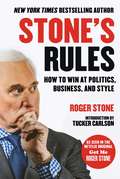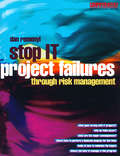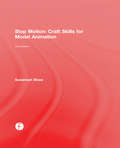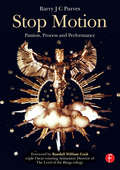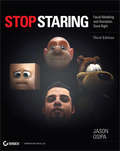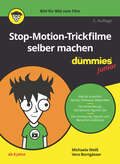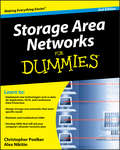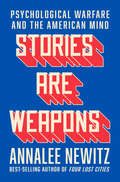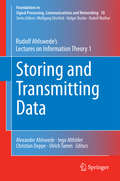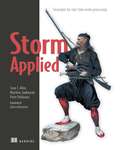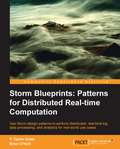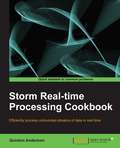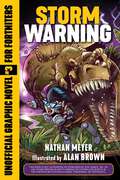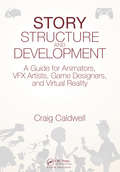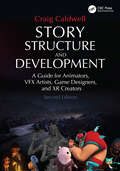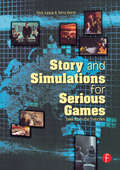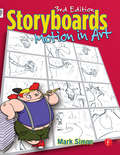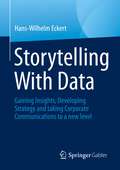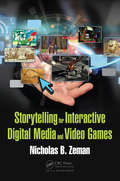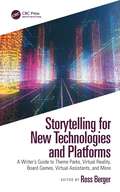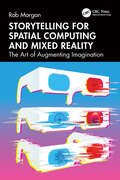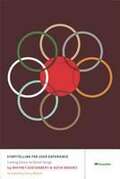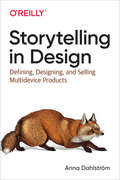- Table View
- List View
Stolpersteine auf dem Weg zur Überwindung des Terrors
by Yair Sharan Elizabeth Florescu Ted J. Gordon, LLCIn diesem Buch werden die potenziellen Entwicklungen des Terrorismus und die Möglichkeiten diesen zu verhindern, bewertet. Das Buch thematisiert die wachsende Bedrohung durch die Verfügbarkeit neuer Technologien und wie diese dazu beitragen können, diejenigen mit potenziell böswillige Absichten aufzuhalten. Der Donnerhall des Terrors ertönt von überall her; wie können wir ihn aufhalten? Was sind die Stolpersteine auf dem Weg dorthin und wie können wir sie vermeiden? Immer mehr Menschen haben Zugang zu immer mehr Informationen und immer mehr zerstörerischen Technologien. Inzwischen helfen uns fortschrittliche Technologien, eine sicherere und harmonischere Welt zu schaffen. Vorteile und Nachteile verstärken sich gegenseitig. Während die hybriden Bedrohungen zunehmen, steigen auch die Möglichkeiten, ihnen zu begegnen. Doch was sind die Kompromisse und wie können wir sie abmildern? Dieses Buch befasst sich auch mit den unerwarteten und oft zufälligen Erfolgen und Misserfolgen von Maßnahmen zur Bekämpfung der sich entwickelnden Terrorgefahr. Die verschiedenen Aspekte des Terrorismusphänomens werden auf einzigartige Weise anhand von Szenarien dargestellt, die dem Leser ein realistisches Bild von der Bedrohung vermitteln. Die Kombination positiver und negativer Auswirkungen aufkommender Technologien beschreibt eine der vielleicht wichtigsten Dimensionen unserer gemeinsamen Zukunft.
Stone's Rules: How to Win at Politics, Business, and Style
by Tucker Carlson Roger StoneRules to live by from the master of political dark arts, as seen in the award-winning documentary Get Me Roger StoneAt long last, America’s most notorious political operative has released his operating manual!A freedom fighter to his admirers, a dirty trickster to his detractors, the flamboyant, outrageous, articulate, and extraordinarily well-dressed Roger Stone lays out Stone’s Rules—the maxims that have governed his legendary career as a campaign operative for four American presidents, from Richard Nixon and Ronald Reagan to Donald Trump.As a raconteur, pundit, prognosticator, and battle-scarred veteran of America’s political wars, Roger Stone shares his lessons on punking liberals and playing the media, gives an inside look at his push to legalize marijuana, details how much "linen" to show at the cuff of an impeccably-cut suit, lays out how and why LBJ orchestrated the murder of JFK, and reveals how to make the truly great marinara sauce that is the foundation of Stone’s legendary Sunday Gravy.Along the way, Stone dishes on the "cloak and dagger" nitty-gritty that has guided his own successes and occasional defeats, culminating in the election of the candidate he first pushed for the presidency in 1988, Donald J. Trump.First revealed in the Weekly Standard by Matt Labash and commemorated by CNN’s Jeffrey Toobin, the blunt, pointed, and real-world practical Stone’s Rules were immortalized in the Netflix smash hit documentary Get Me Roger Stone—part Machiavelli's The Prince, part Sun Tzu’s The Art of War, all brought together with a highly-entertaining blend of culinary and sartorial advice from the Jedi Master of political dark arts.From "Attack, attack, attack!" inspired by Winston Churchill, to "Three can keep a secret, if two are dead,” taken from the wall of mob boss Carlos Marcello’s headquarters, to Stone’s own “It is better to be infamous than to never have been famous at all,” Roger Stone shares with the world all that he’s learned from his decades of political jujitsu and life as a maven of high-style. From Stone’s Rules for campaign management to the how-to’s of an internet mobilization campaign to advice on custom tailoring to the ingredients for the perfect martini from Dick Nixon's (no-longer) secret recipe, Stone has fashioned the truest operating manual for anyone navigating the rough-and-tumble of business, finance, politics, social engagement, family affairs, and life itself.
Stop IT Project Failures
by Dan RemenyiThis book is about information systems development failures and how to avoid them. It considers what goes wrong with information systems development projects and what actions may be taken to avoid potential difficulties.The reduction of the impact,or even the elimination of the problems,is discussed in terms of an information systems risk management programme.Stop I.T.Project failure helps to ensure that IS project managers are successful in helping to deliver application systems. However, IS development risk can never be entirely eliminated and consequently the practitioner needs to bear in mind that an IS development project is never without risk, and hence there is a continuing potential for something to go wrong.The book covers the key issues and variables and makes specific practical suggestions about the good management practice that is required to implement IS project risk processes. Dr. Dan Remenyi has spent more than 25 years working in the field of corporate computers and information systems. He has worked with computers as an IS professional, business consultant and user. In all these capacities he has been primarily concerned with benefit realisation and obtaining the maximum value for money from the organisations' information systems investment and effort. He has worked extensively in the field of information systems project management, specialising in the area of project risk identification and management. He has written a number of books and papers in the field of IT management and regularly conducts courses and seminars as well as working as a consultant in this area. Dr.Dan Remenyi holds a B.Soc.Sc., an MBA and a PhD. He is a Visiting Professor at Chalmers University of Technology in Gothenberg, Sweden and an associate member of faculty at Henley Management College in the United Kingdom.
Stop Motion: Craft Skills For Model Animation
by Susannah ShawStop motion animation is a challenging and time-consuming skill that requires patience, adaptability, and a close eye to detail. Stop Motion: Craft Skills for Model Animation, 3rd Edition is the essential guide to help stop motion animators overcome these challenges of this highly-skilled craft. Author Susannah Shaw provides a step-by-step guide to creating successful stop motioin films. Starting with some basic exercises, the reader will learn about developing a story, making models, creating sets and props, the mechanics of movements, filming postproduction, and how to set about finding that first elusive job in a modern studio. Key Features Interviews with current stars, step-by-step examples, coverage of Rapid Prototyping and Dragonframe Software
Stop Motion: Passion, Process and Performance
by Barry J PurvesBe inspired by award-winning animator Barry Purves' honest insight into the creative process of making stop motion animations, using his own classic films to illustrate every step along the way. With Barry's enthusiasm for puppets in all their many guises and in-depth interviews from some of the world's other leading practitioners, there is advice, inspiration and entertainment galore in Stop Motion: Passion, Process and Performance. And there's more! Many of the artists and craftsmen interviewed have contributed their own specially drawn illustrations - showing their inspirations, heroes and passion for their craft. These beautiful images help make the book a truly personal journey into the heart of the animation industry with broad appeal for anyone with a love of animation.
Stop Staring: Facial Modeling and Animation Done Right
by Jason OspiaThe de facto official source on facial animation-now updated! If you want to do character facial modeling and animation at the high levels achieved in today's films and games, Stop Staring: Facial Modeling and Animation Done Right, Third Edition, is for you. While thoroughly covering the basics such as squash and stretch, lip syncs, and much more, this new edition has been thoroughly updated to capture the very newest professional design techniques, as well as changes in software, including using Python to automate tasks. Shows you how to create facial animation for movies, games, and more Provides in-depth techniques and tips for everyone from students and beginners to high-level professional animators and directors currently in the field Features the author's valuable insights from his own extensive experience in the field Covers the basics such as squash and stretch, color and shading, and lip syncs, as well as how to automate processes using Python Breathe life into your creations with this important book, considered by many studio 3D artists to be the quintessential reference on facial animation.
Stop-Motion-Trickfilme selber machen für Dummies Junior (Für Dummies)
by Vera Borngässer Michaela WeißYouTube-Videos schauen kann jeder, aber einen Stop-Motion-Trickfilm selbst produzieren? Das ist ganz einfach: Denke dir eine Geschichte aus und bastle aus einfachen Materialien Figuren. Lass die Puppen tanzen und vermische Wirklichkeit und Fantasie. Hintergründe und Ton-Dateien bieten wir dir zum Download an. Im Buch findest du außerdem jede Menge Tipps zu Beleuchtung, Geräuschen, Anordnung der Figuren und Spezialeffekten. Sei kreativ, bearbeite die Filme am Computer weiter und verblüffe Freunde und Familie mit deinem Video. Wir zeigen dir Schritt für Schritt, wie es geht. Bestens geeignet für Kinder und Jugendliche ab 8 Jahre.
Storage Area Networks For Dummies, 2nd Edition
by Christopher Poelker Alex NikitinIf you've been charged with setting up storage area networks for your company, learning how SANs work and managing data storage problems might seem challenging. Storage Area Networks For Dummies, 2nd Edition comes to the rescue with just what you need to know. Whether you already a bit SAN savvy or you're a complete novice, here's the scoop on how SANs save money, how to implement new technologies like data de-duplication, iScsi, and Fibre Channel over Ethernet, how to develop SANs that will aid your company's disaster recovery plan, and much more. For example, you can: Understand what SANs are, whether you need one, and what you need to build one Learn to use loops, switches, and fabric, and design your SAN for peak performance Create a disaster recovery plan with the appropriate guidelines, remote site, and data copy techniques Discover how to connect or extend SANs and how compression can reduce costs Compare tape and disk backups and network vs. SAN backup to choose the solution you need Find out how data de-duplication makes sense for backup, replication, and retention Follow great troubleshooting tips to help you find and fix a problem Benefit from a glossary of all those pesky acronyms From the basics for beginners to advanced features like snapshot copies, storage virtualization, and heading off problems before they happen, here's what you need to do the job with confidence!
Storage Policies and Maintenance Support Strategies in Warehousing Systems
by Xiaolong GuoThis book studies storage policies in warehousing systems and maintenance-support strategies for critical operational systems in warehouses, which are the most important issues affecting operational efficiency of warehousing systems. It expands on the theory of class-based storage by considering a finite number of items in store, and also introduces the maintenance-support strategy founded on performance-based contract theory. It is a valuable resource for researchers, practitioners and engineers in the fields of industrial engineering, operations management, operations research and management science.
Stories Are Weapons: Psychological Warfare and the American Mind
by Annalee NewitzOne of Publishers Weekly's Top 10 Politics/Current Events books of Spring 2024 A sharp and timely exploration of the dark art of manipulation through weaponized storytelling, from the best-selling author of Four Lost Cities. In Stories Are Weapons, best-selling author Annalee Newitz traces the way disinformation, propaganda, and violent threats—the essential tool kit for psychological warfare—have evolved from military weapons deployed against foreign adversaries into tools in domestic culture wars. Newitz delves into America’s deep-rooted history with psychological operations, beginning with Benjamin Franklin’s Revolutionary War–era fake newspaper and nineteenth-century wars on Indigenous nations, and reaching its apotheosis with the Cold War and twenty-first-century influence campaigns online. America’s secret weapon has long been coercive storytelling. And there’s a reason for that: operatives who shaped modern psychological warfare drew on their experiences as science fiction writers and in the advertising industry. Now, through a weapons-transfer program long unacknowledged, psyops have found their way into the hands of culture warriors, transforming democratic debates into toxic wars over American identity. Newitz zeroes in on conflicts over race and intelligence, school board fights over LGBT students, and campaigns against feminist viewpoints, revealing how, in each case, specific groups of Americans are singled out and treated as enemies of the state. Crucially, Newitz delivers a powerful counternarrative, speaking with the researchers and activists who are outlining a pathway to achieving psychological disarmament and cultural peace. Incisive and essential, Stories are Weapons reveals how our minds have been turned into blood-soaked battlegrounds—and how we can put down our weapons to build something better.
Storing and Transmitting Data
by Ingo Althöfer Rudolf Ahlswedealexander Ahlswede Christian Deppe Ulrich TammThe volume "Storing and Transmitting Data" is based on Rudolf Ahlswede's introductory course on "Information Theory I" and presents an introduction to Shannon Theory. Readers, familiar or unfamiliar with the technical intricacies of Information Theory, will benefit considerably from working through the book; especially Chapter VI with its lively comments and uncensored insider views from the world of science and research offers informative and revealing insights. This is the first of several volumes that will serve as a collected research documentation of Rudolf Ahlswede's lectures on information theory. Each volume includes comments from an invited well-known expert. Holger Boche contributed his insights in the supplement of the present volume. Classical information processing concerns the main tasks of gaining knowledge, storage, transmitting and hiding data. The first task is the prime goal of Statistics. For the two next, Shannon presented an impressive mathematical theory called Information Theory, which he based on probabilistic models. The theory largely involves the concept of codes with small error probabilities in spite of noise in the transmission, which is modeled by channels. The lectures presented in this work are suitable for graduate students in Mathematics, and also in Theoretical Computer Science, Physics, and Electrical Engineering with background in basic Mathematics. The lectures can be used as the basis for courses or to supplement courses in many ways. Ph. D. students will also find research problems, often with conjectures, that offer potential subjects for a thesis. More advanced researchers may find the basis of entire research programs.
Storm Applied: Strategies for real-time event processing
by Matthew Jankowski Peter Pathirana Sean AllenSummaryStorm Applied is a practical guide to using Apache Storm for the real-world tasks associated with processing and analyzing real-time data streams. This immediately useful book starts by building a solid foundation of Storm essentials so that you learn how to think about designing Storm solutions the right way from day one. But it quickly dives into real-world case studies that will bring the novice up to speed with productionizing Storm.Purchase of the print book includes a free eBook in PDF, Kindle, and ePub formats from Manning Publications.SummaryStorm Applied is a practical guide to using Apache Storm for the real-world tasks associated with processing and analyzing real-time data streams. This immediately useful book starts by building a solid foundation of Storm essentials so that you learn how to think about designing Storm solutions the right way from day one. But it quickly dives into real-world case studies that will bring the novice up to speed with productionizing Storm.About the TechnologyIt's hard to make sense out of data when it's coming at you fast. Like Hadoop, Storm processes large amounts of data but it does it reliably and in real time, guaranteeing that every message will be processed. Storm allows you to scale with your data as it grows, making it an excellent platform to solve your big data problems.About the BookStorm Applied is an example-driven guide to processing and analyzing real-time data streams. This immediately useful book starts by teaching you how to design Storm solutions the right way. Then, it quickly dives into real-world case studies that show you how to scale a high-throughput stream processor, ensure smooth operation within a production cluster, and more. Along the way, you'll learn to use Trident for stateful stream processing, along with other tools from the Storm ecosystem.This book moves through the basics quickly. While prior experience with Storm is not assumed, some experience with big data and real-time systems is helpful.What's InsideMapping real problems to Storm componentsPerformance tuning and scalingPractical troubleshooting and debuggingExactly-once processing with TridentAbout the AuthorsSean Allen, Matthew Jankowski, and Peter Pathirana lead the development team for a high-volume, search-intensive commercial web application at TheLadders.Table of ContentsIntroducing StormCore Storm conceptsTopology designCreating robust topologiesMoving from local to remote topologiesTuning in StormResource contentionStorm internalsTrident
Storm Blueprints: Patterns for Distributed Real-time Computation
by Brian O'Neill P. Taylor GoetzA blueprints book with 10 different projects built in 10 different chapters which demonstrate the various use cases of storm for both beginner and intermediate users, grounded in real-world example applications. Although the book focuses primarily on Java development with Storm, the patterns are more broadly applicable and the tips, techniques, and approaches described in the book apply to architects, developers, and operations. Additionally, the book should provoke and inspire applications of distributed computing to other industries and domains. Hadoop enthusiasts will also find this book a good introduction to Storm, providing a potential migration path from batch processing to the world of real-time analytics.
Storm Real-Time Processing Cookbook
by Quinton AndersonA Cookbook with plenty of practical recipes for different uses of Storm.If you are a Java developer with basic knowledge of real-time processing and would like to learn Storm to process unbounded streams of data in real time, then this book is for you.
Storm Warning: Unofficial Graphic Novel #3 for Fortniters (Storm Shield #3)
by Nathan MeyerDefeating their enemies is challenging, but when the world is crumbling around them it’s next to impossible! The Stonewood Survivors, still learning to work as a team, must prevent the villains Omega and The Visitor from acquiring vital Vindertech equipment and unleashing terror. But cracks in space and time have split the sky above Battle Island, adding even more dangerous surprises to their quest. Strange anomalies begin to mutate the landscape without warning. A devastating earthquake unleashes an active volcano. To make matters worse, dinosaurs run wild! Bravo Team struggles to rescue survivors and build the Stonewood Community amidst constant threats to their security. Across the island, the Visitor operates a mysterious facility perched atop a volcano, where he’s building a massive robot. The New Omega leads her army of Secura-bots into Vindertech properties, looting technology. But the bad guys aren’t the only ones who’ve acquired new tech. Bravo Team has undergone a major upgrade and stand ready to slug it out wherever there’s a fight. The key to stopping the villainous duo lies beneath Lonely Lodge. There, in a clandestine Vindertech facility, a Quantum Drive prototype rests in cryogenesis. Team Bravo scrambles to beat the Visitor and Omega to the prize, but it will be a brutal race to the finish! <P><P> <i>Advisory: Bookshare has learned that this book offers only partial accessibility. We have kept it in the collection because it is useful for some of our members. Benetech is actively working on projects to improve accessibility issues such as these.</i>
Story Structure and Development: A Guide for Animators, VFX Artists, Game Designers, and Virtual Reality
by Craig CaldwellProfessor Craig Caldwell’s Story Structure and Development offers a clear approach to the essentials of story. It lays out the fundamental elements, principles, and structure for animators, designers, and artists so they can incorporate these concepts in their work. As a practical guide it includes extensive insights and advice from industry professionals. Readers will learn the universal patterns of story and narrative used in today’s movies, animation, games, and VR. With over 200 colorful images, this book has been designed for visual learners, and is organized to provide access to story concepts for the screen media professional and student. Readers will discover the story fundamentals referred to by every director and producer when they say "It’s all about story".
Story Structure and Development: A Guide for Animators, VFX Artists, Game Designers, and XR Creators
by Craig CaldwellProfessor Craig Caldwell’s Story Structure and Development provides a clear and practical approach to understanding the essentials of storytelling. This book distills fundamental elements, principles, and structures, explicitly tailored for animators, game designers, VFX artists, and XR creators, so they can seamlessly integrate these concepts into their work. It is a comprehensive guide, enriched with extensive insights and advice from industry professionals.The thoroughly revised and updated Second Edition introduces new film and animation examples alongside over 200 vibrant images designed with today’s digital content creators in mind. Organized to enhance accessibility, this edition offers a structured approach to the story fundamentals critical to today’s movies, animation, games, and XR. Readers will gain valuable insights into the universal patterns of narrative, gaining a deeper understanding of the core story concepts that directors and producers often emphasize with the phrase, "It’s all about story."Key Features: Comprehensive Story Structure: This approach consolidates universal story frameworks across the digital media industry into a single, accessible text Visual Learning: Features a wealth of illustrations and visuals that reinforce and clarify key concepts for visual learners Flexible Organization: It is structured to allow readers to access sections in a non-linear manner, either for individual reference or adaptation to various teaching methodologies
Story and Simulations for Serious Games: Tales from the Trenches
by Nick Iuppa Terry BorstHow to create a simulation where participants have a sense of freedom and personal control while still maintaining the structure necessary for an effective story is a difficult task indeed. This book examines how to create an engaging, effective story (necessary to teach participants), while relating practical considerations of building a simulation. It also looks at stories as classic ways of teaching and gathering knowledge and considers other theories of interactive narrative design such as synthetic story creation and management and participant-generated story experiences. It also discusses enabling technologies in artificial intelligence, synthetic characters design and development, speech recognition technology, 3D modelling, and the future of story-driven games. Story Driven Simulations reviews the existing efforts in this field as well as focusing on the recent efforts of Paramount Pictures and The Institute for Creative Technologies at the University of Southern California, where this expert author team created successful simulations for the U.S. Army, Department of Defense, as well as other educational simulations.
Storyboards: Motion In Art
by Mark A. SimonAmong the most useful tools in the production of any TV show or film is the storyboard, which is the visual blueprint of a project before it is shot. The director's vision is illustrated in the manner of a comic strip and handed on to the crew for purposes of budgeting, design, and communication.Storyboards: Motion in Art 3/e is an in depth look at the production and business of storyboards. Using exercises, real-life examples of working in the entertainment industry, interviews with people in the industry, and sample storyboard drawing, this book will teach you how to :* Develop and Improve your boards* Work with directors* Develop your resume and your portfolio* Market your talent* Create and improve a storyboard using computersPacked full of practical industry information and examples, this book will help the reader improve their skills to either land their first assignment or advance their career.
Storytelling With Data: Gaining Insights, Developing Strategy and taking Corporate Communications to a new level
by Hans-Wilhelm EckertThis book shows the role data plays in communication and marketing and how it can be used as an important source for storytelling. Because data, as a raw material of the digital age, inspires corporate strategy. Provided it is collected, interpreted and processed properly, it provides new and sometimes surprising insights into contexts and offers the opportunity to develop exciting stories from it. Stories that also create relevance with regard to corporate goals, spark dialogues and make communication effective. The author explains in an easy-to-understand way how data-based communication strategies can be turned into gripping stories. He also provides useful tools and shows why data can lie, how important its visual processing is, where its use meets ethical limits and why data protection is also a business opportunity. Using practical examples, the book offers marketing and communication experts - but also interested managers from other disciplines - numerous inspirations and new perspectives.
Storytelling for Interactive Digital Media and Video Games
by Nicholas ZemanThe evolution of story-telling is as old as the human race; from the beginning, when our ancestors first gathered around a campfire to share wondrous tales through oral traditions, to today, with information and stories being shared through waves and filling screens with words and images. Stories have always surrounded us, and united us in ways other disciplines can't. Storytelling for Interactive Digital Media and Video Games lays out the construct of the story, and how it can be manipulated by the storyteller through sound, video, lighting, graphics, and color. This book is the perfect guide to aspiring storytellers as it illustrates the different manner of how and why stories are told, and how to make them "interactive." Storytelling features heavy game development as a method of storytelling and delivery, and how to develop compelling plots, characters, settings, and actions inside a game. The concept of digital storytelling will be explored, and how this differs from previous incarnations of mediums for stories Key Features: Explores the necessary elements of a story (setting, character, events, sequence, and perspective) and how they affect the viewer of the story Discusses media and its role in storytelling, including images, art, sound, video, and animation Explores the effect of interactivity on the story, such as contest TV, web-based storytelling, kiosks, and games Shows the different types of story themes in gaming and how they are interwoven Describes how to make games engaging and rewarding intrinsically and extrinsically
Storytelling for New Technologies and Platforms: A Writer’s Guide to Theme Parks, Virtual Reality, Board Games, Virtual Assistants, and More
by Ross BergerWant to know what it’s like to write for a theme park attraction? Or an interactive toy? Or for a virtual reality game? Wait – those tell stories? And there are jobs for people to write them? Thanks to technology, interactive products and live experiences can now engage us with memorable characters and exciting adventures that were once only destined for the cinema. Storytelling for New Technologies and Platforms: A Writer’s Guide to Theme Parks, Virtual Reality, Board Games, Virtual Assistants, and More is a handbook for writers, students, producers, teachers, scholars, career changers, early tech adopters, and just about anyone who loves story and technology. As a collection of articles from some of the best creative writers in their medium, this book will prepare content creators of tomorrow to tackle some of today's most exhilarating creative challenges found on a screen ... or off! Key Features: Expert advice from several industry professionals who have worked for some of the world’s biggest tech and interactive companies. Best practices that not only guide writers on how to apply their craft to new fields, but also prepare them for the common ambiguity they will find in corporate and start-up environments. Breakdown of platforms that shows how tech capabilities can fulfill content expectations and how content can fulfill tech expectations. Basic storytelling mechanics customized to today’s popular technologies, live experiences, and traditional game platforms.
Storytelling for Spatial Computing and Mixed Reality: The Art of Augmenting Imagination
by Rob MorganThis is a clear, accessible manual of storytelling techniques and learning activities for spatial computing, augmented reality and mixed reality. It covers the key skills that the next generation of digital storytellers will need, providing readers with practical tools for creating digital stories and adventures out in the real world.Drawing on more than a decade of experience, veteran immersive storyteller Rob Morgan provides strategies and techniques for augmenting players and places with digital narrative. Readers will try out key ideas through a range of practical exercises, building up their own portfolio of augmented/spatial narrative projects.Storytelling for Spatial Computing and Mixed Reality provides insight on everything from narrative pacing to conditional and emergent storytelling for augmented/spatial technology. Each chapter addresses key questions about the affordances - and ethics - of augmenting players' realities, helping students and practitioners explore this new storytelling frontier.This book will be invaluable to students of game design, experience design and interactive narrative. It provides theories, best practices and case studies also relevant to creative professionals in games, XR, immersive theatre, theme parks and brand experience.
Storytelling for User Experience: Crafting Stories for Better Design
by Kevin Brooks Whitney QuesenberyWe all tell stories. It's one of the most natural ways to share information, as old as the human race. This book is not about a new technique, but how to use something we already know in a new way. Stories help us gather and communicate user research, put a human face on analytic data, communicate design ideas, encourage collaboration and innovation, and create a sense of shared history and purpose. This book looks across the full spectrum of user experience design to discover when and how to use stories to improve our products. Whether you are a researcher, designer, analyst or manager, you will find ideas and techniques you can put to use in your practice.
Storytelling in Design: Defining, Designing, and Selling Multidevice Products
by Anna DahlströmWith the wide variety of devices, touch points, and channels in use, your ability to control how people navigate your well-crafted experiences is fading. Yet it’s still important to understand where people are in their journey if you’re to deliver the right content and interactions atthe right time and on the right device.This practical guide shows you how storytelling can make a powerful difference in product design. Author Anna Dahlström details the many ways you can use storytelling in your projects and throughout your organization. By applying tried-and-tested principles from film and fiction to the context of design and business, you’ll learn to create great product experiences.Learn how the anatomy of a great story can make a difference in product designExplore how traditional storytelling principles, tools, and methods relate to key product design aspectsUnderstand how purposeful storytelling helps tell the right story and move people into actionUse storytelling principles to tell, sell, and present your work

